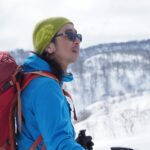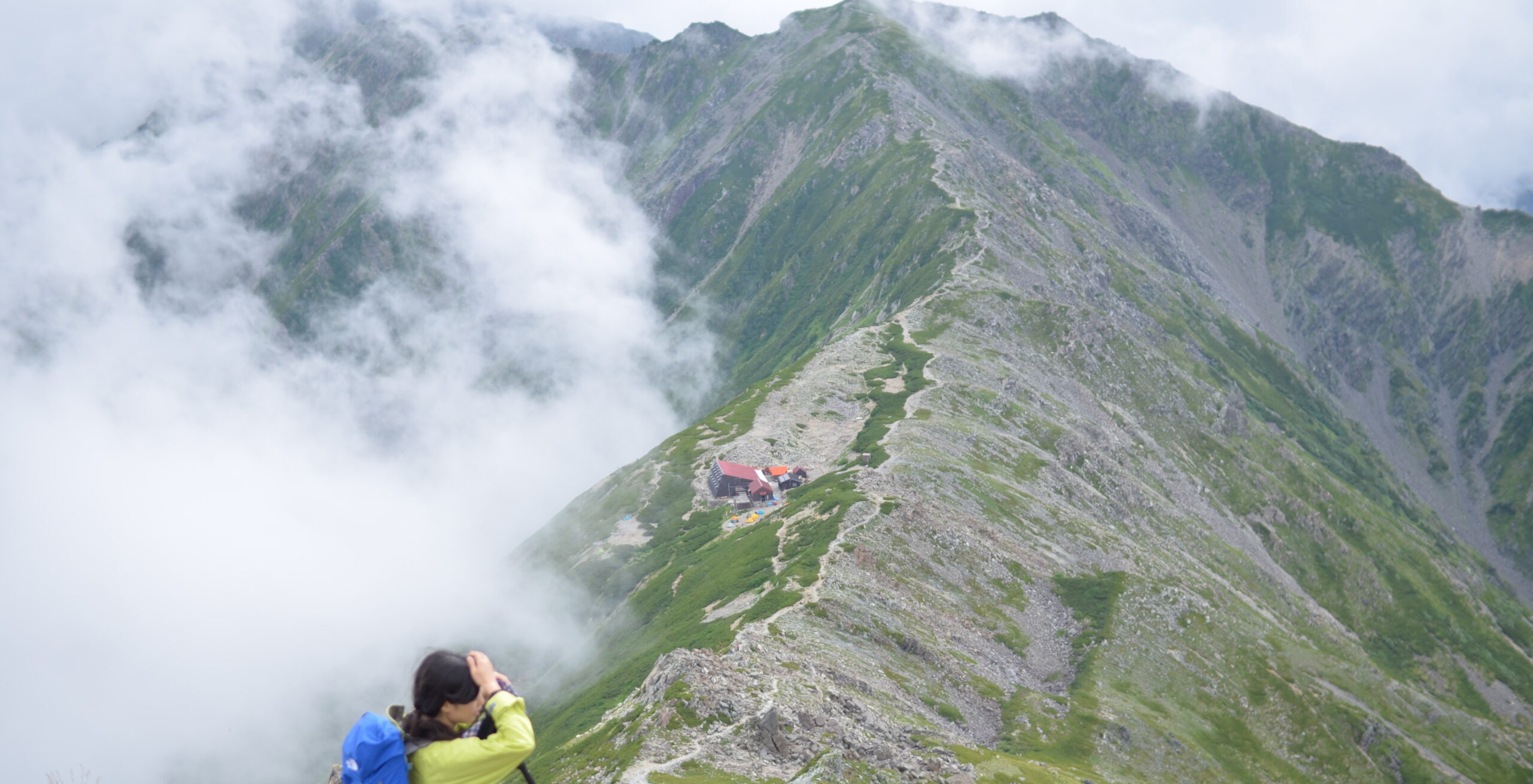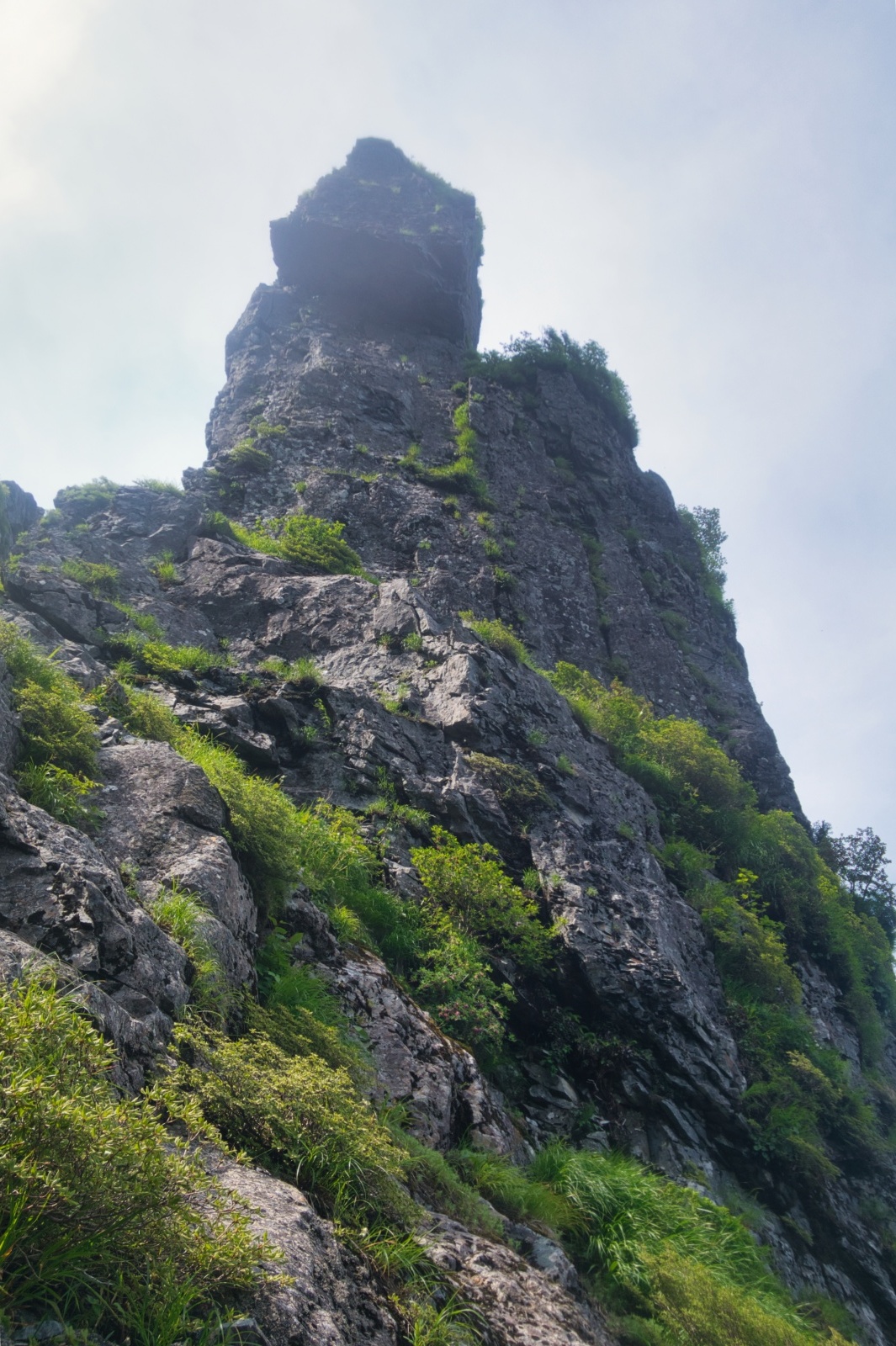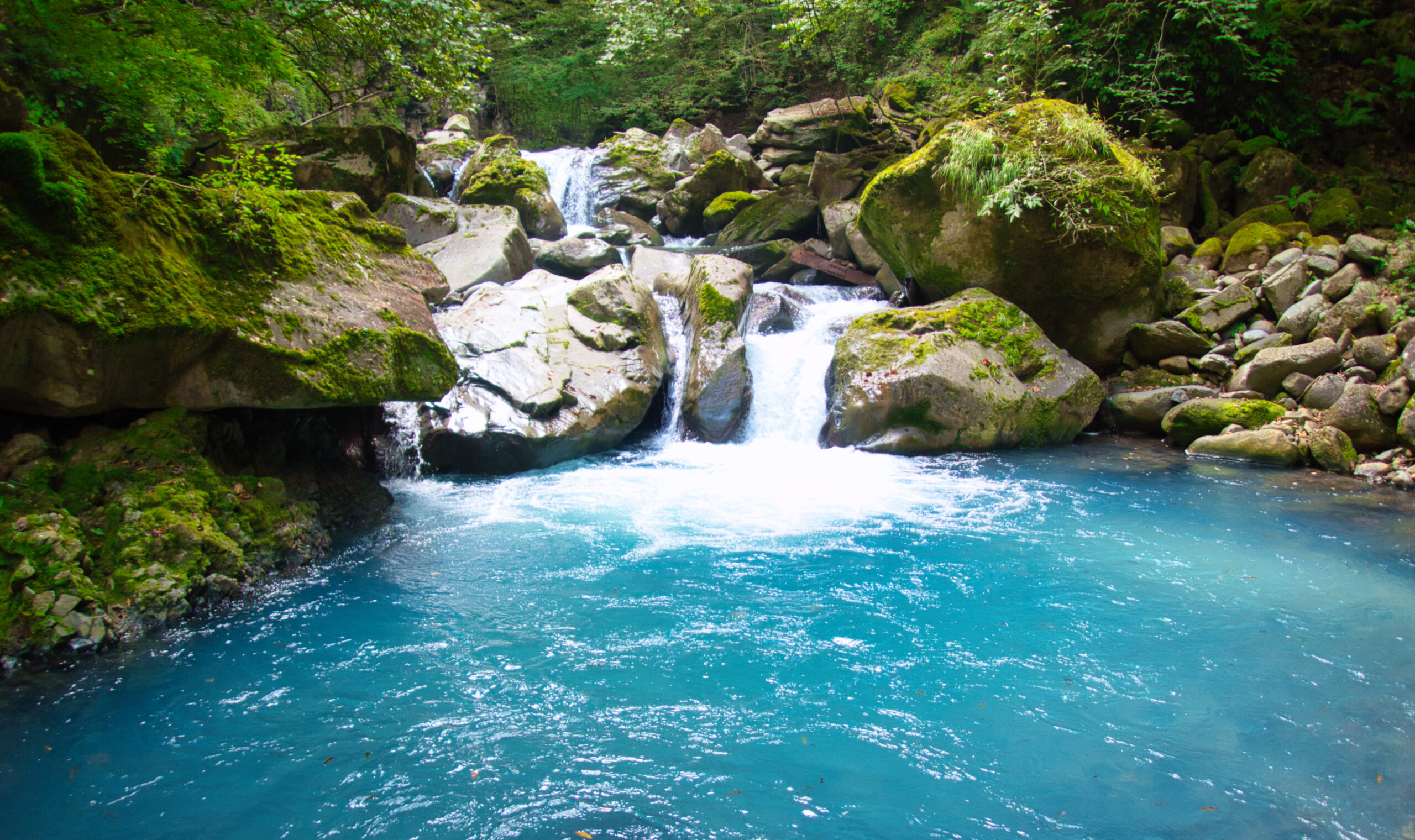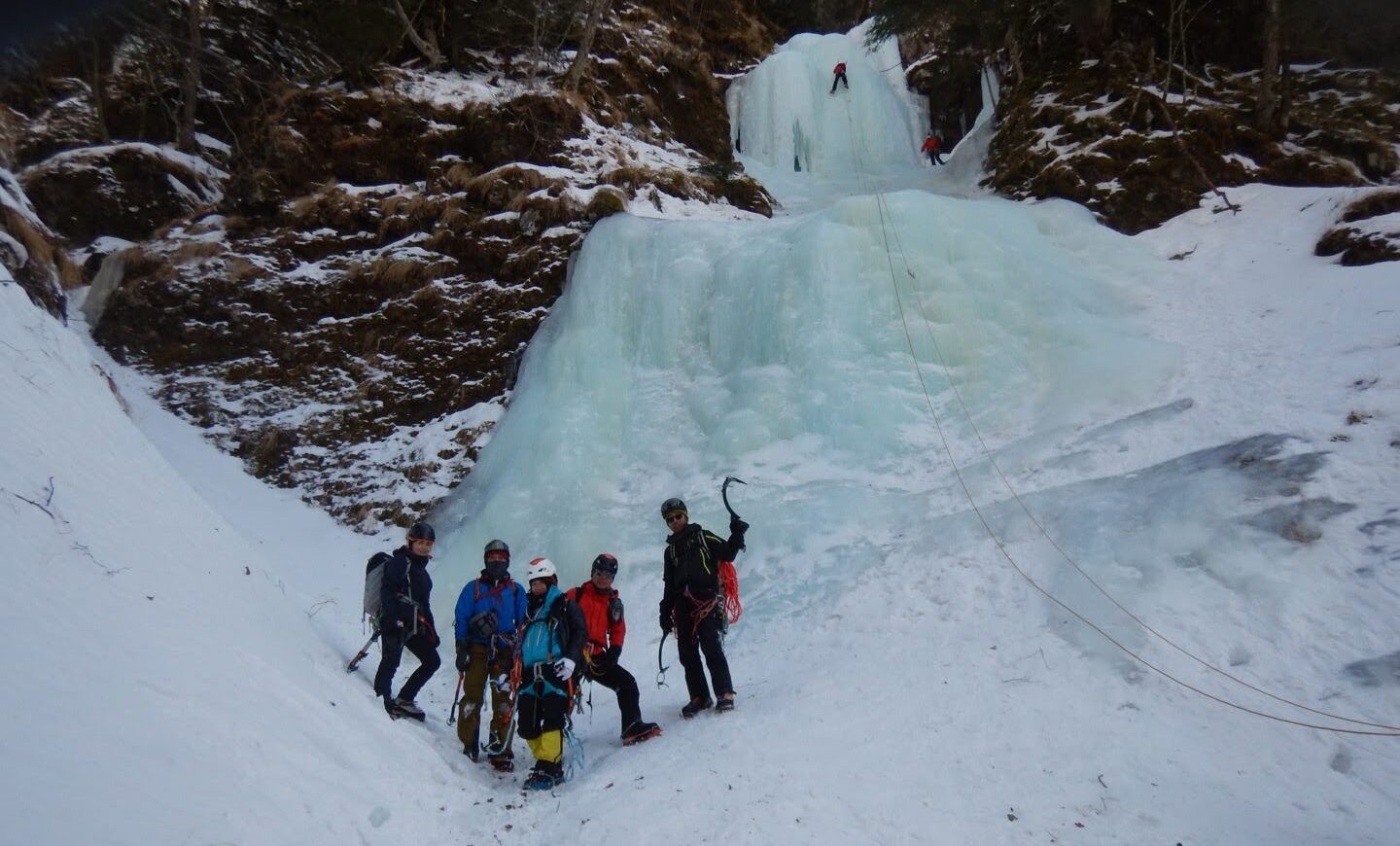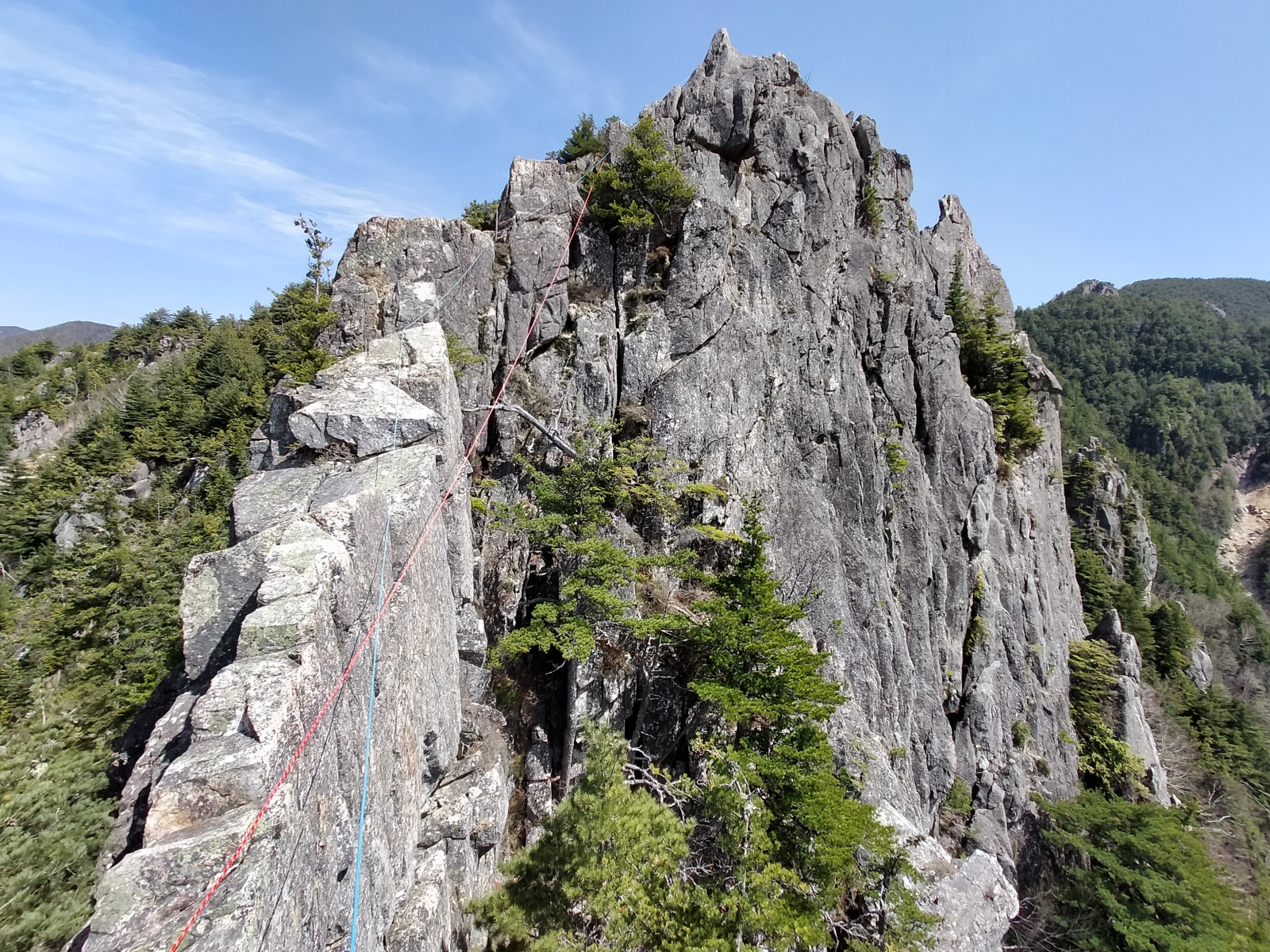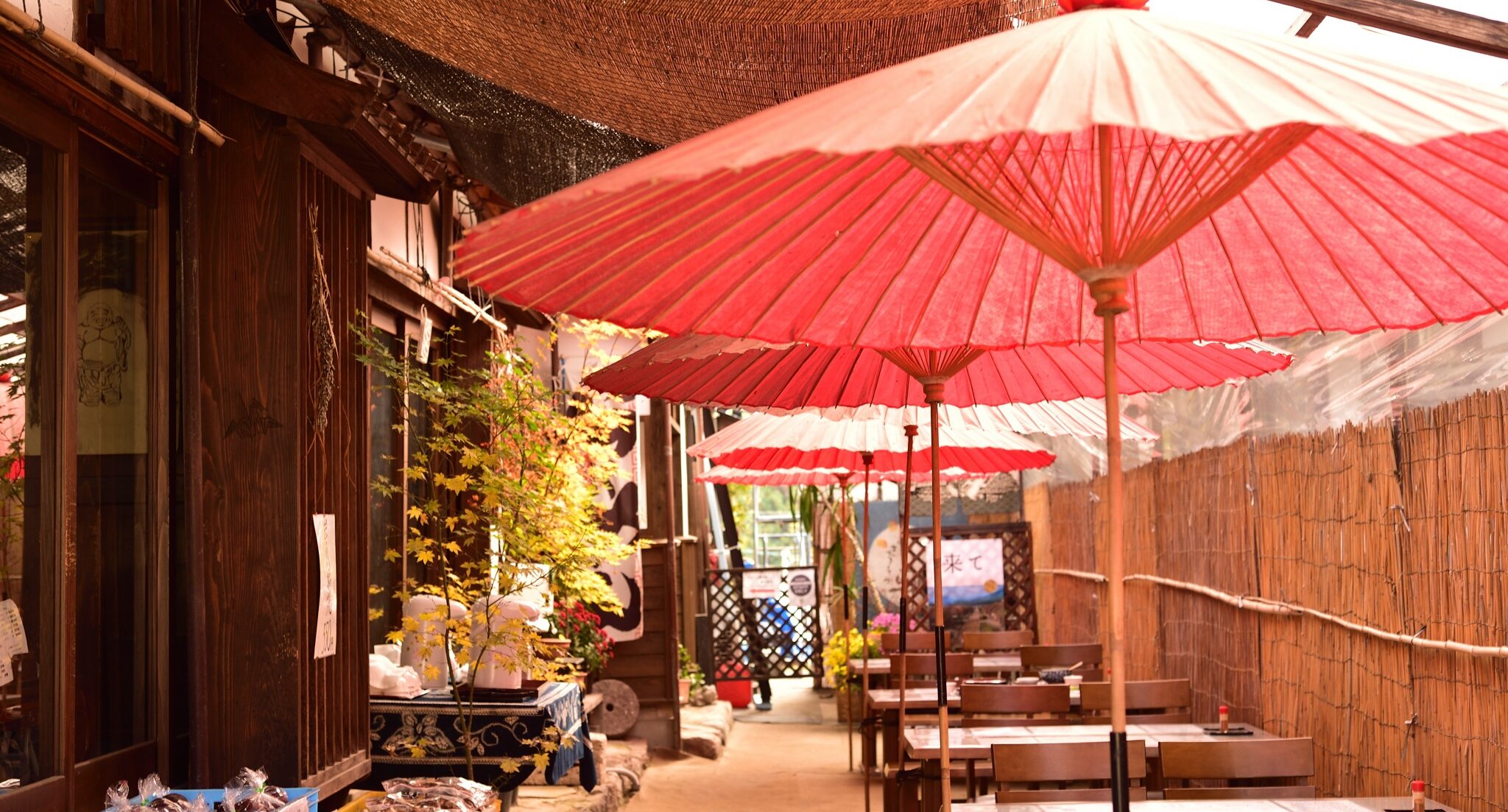【Deep Dive Chronicle】Ura-Iwate Mountain Range: Ski Descent Through Deep Midwinter Snow
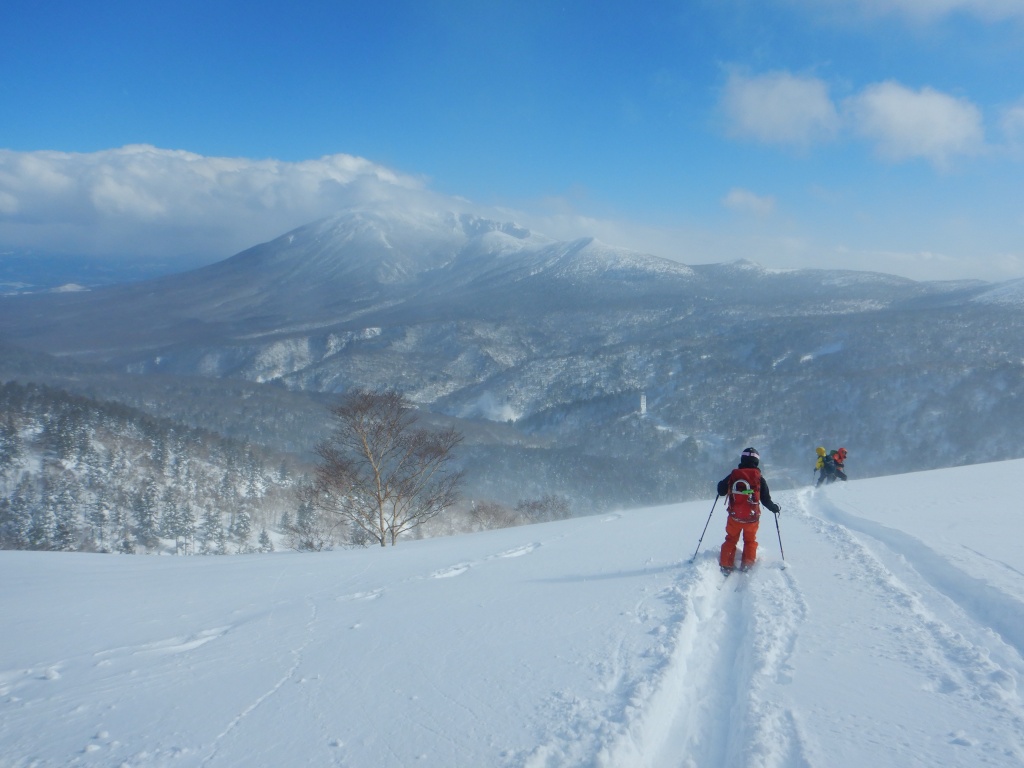
The Ura-Iwate region in February was a realm of serene snow. Into this mountain domain, sealed by harsh cold winds, I ventured with ten companions to challenge it from the perspective of backcountry skiing. Our two-day skiing camp based at Higashi-Hachimantai Onsen was filled with snow, wind, and an unquenchable thirst for pure descent. This is a record of our midwinter expedition circling Gentaga-dake and Mitsuishi-yama, cradled in the embrace of the magnificent Mt. Iwate.
目次
Part One: Baptism of Steep Ascent and Trail-Breaking Hell
Deep Snow Tests the Spirit
On February 23rd, our vehicle departed Miyagi in deep darkness, passing through Matsukawa Onsen before reaching the Gentaga-dake trailhead. The time was 9:18 AM. Though fatigue from the long car journey weighed on us, anticipation for the pristine white slopes ahead surpassed it.
Before departure, my senior K conducted individual beacon checks as always. This solemn ritual in snow mountains deepened the sense of solidarity among us, trusting each other with our lives. We confirmed each other’s safety and stepped forward, one step after another, into the deep-snow forest.
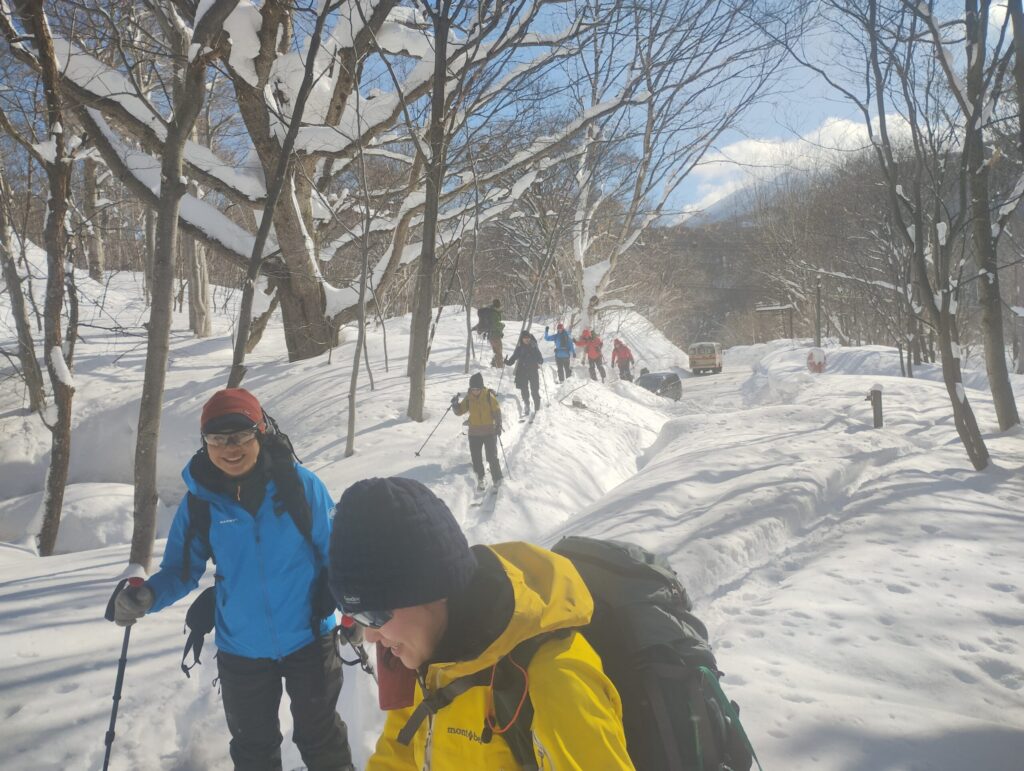
The mountain tested us mercilessly. This day’s ascent included many sections with rapid elevation gain over short distances—truly a trail-breaking paradise. Or perhaps hell. Ski trail-breaking itself wasn’t unbearably painful, but perhaps due to inexperience, I found myself applying unnecessary force, making it inefficient. My companions, taking turns at the front, silently carved traces through the deep snow. While grateful for this solidarity, I directed introspective questions toward my own technical inadequacy. The only support for our large group’s movement came from M’s steady footsteps, who participated on foot rather than skis, firmly treading the snow.
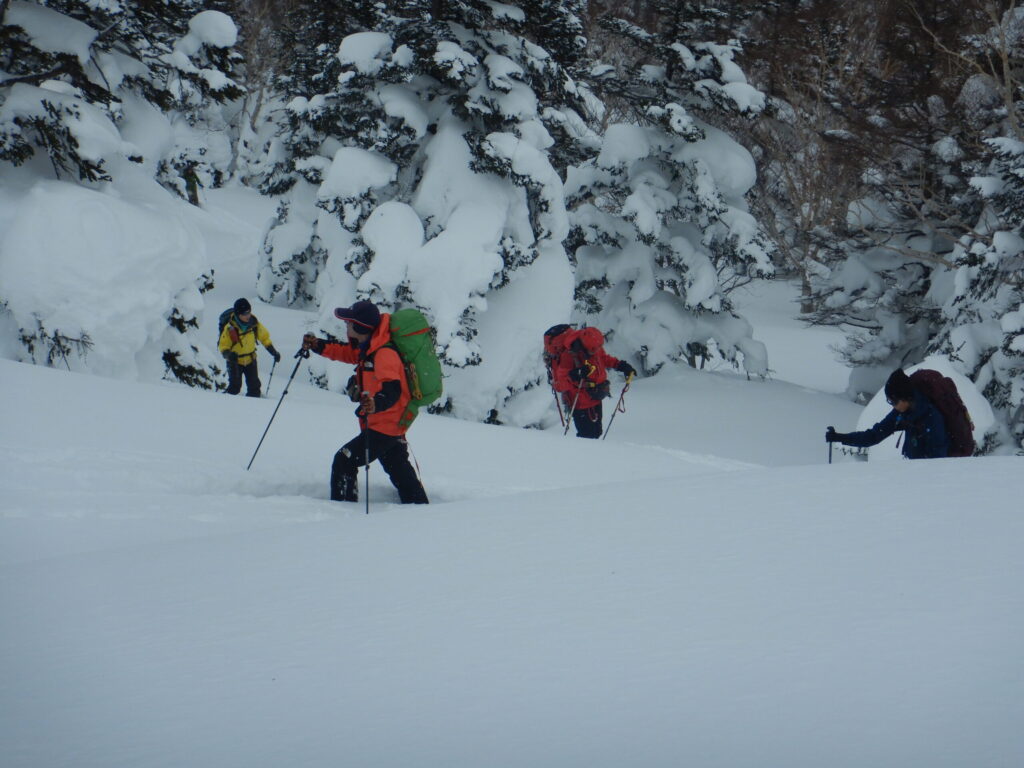
Sixth Year of Elation
As we gained elevation, the snow deepened, and as we approached the ridgeline, the weather transformed dramatically. I knew the slope visible on our left was prone to snow accumulation and frequent avalanches. Exercising extreme caution, we crested the ridgeline only to be struck by fierce winds, visibility rapidly deteriorating.
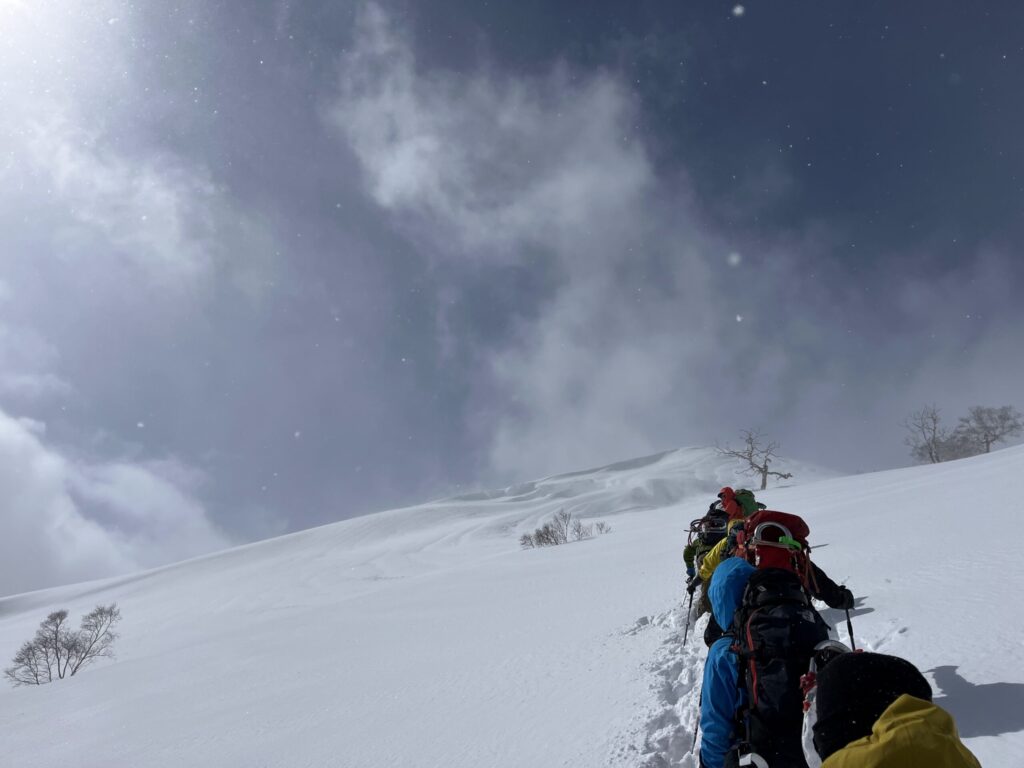
The severe aspect of midwinter mountains appeared through the white, driving snow. After briefly deciding to retreat from the ridgeline, we shifted into position for the core of our expedition: the descent.
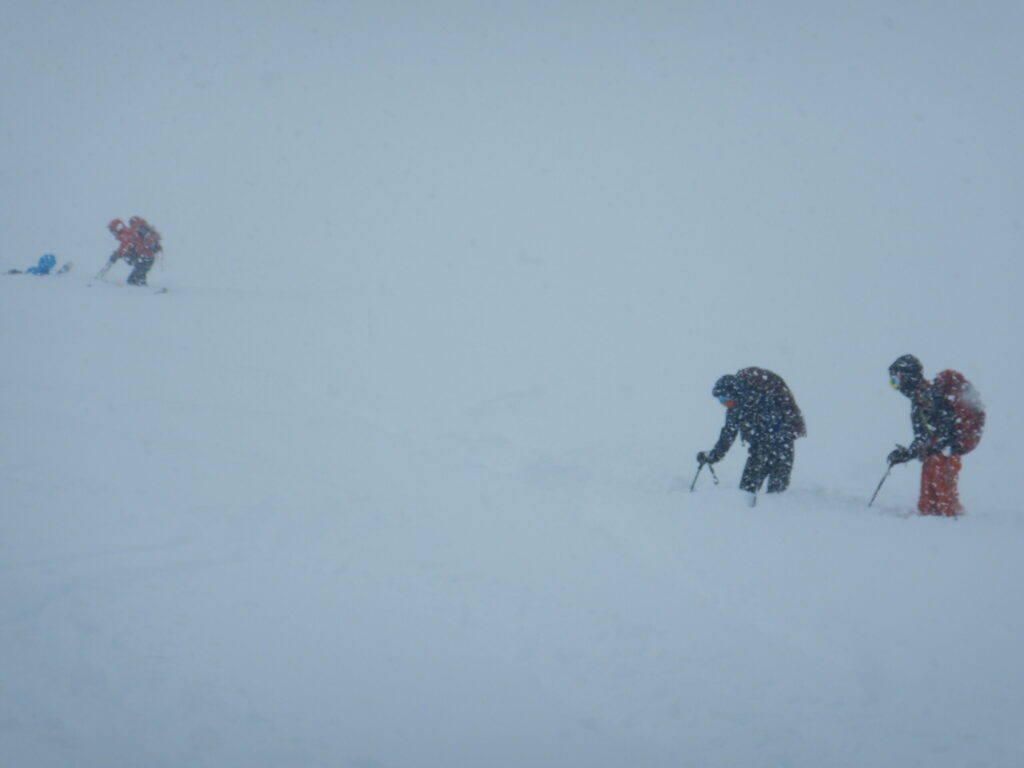
We peeled off our skins, and the boards sliced through the snow surface. The slope offered supreme deep powder. In my sixth year of backcountry skiing, whereas I once regularly drowned in snow, I rarely fall now. The boards ran as if adhering to the snow surface, white plumes dancing upward. This floating sensation surely represents the pinnacle of skiing’s appeal. A gift from the mountain, brought by snowfall said to occur once a decade—I even wished this descent could continue forever.
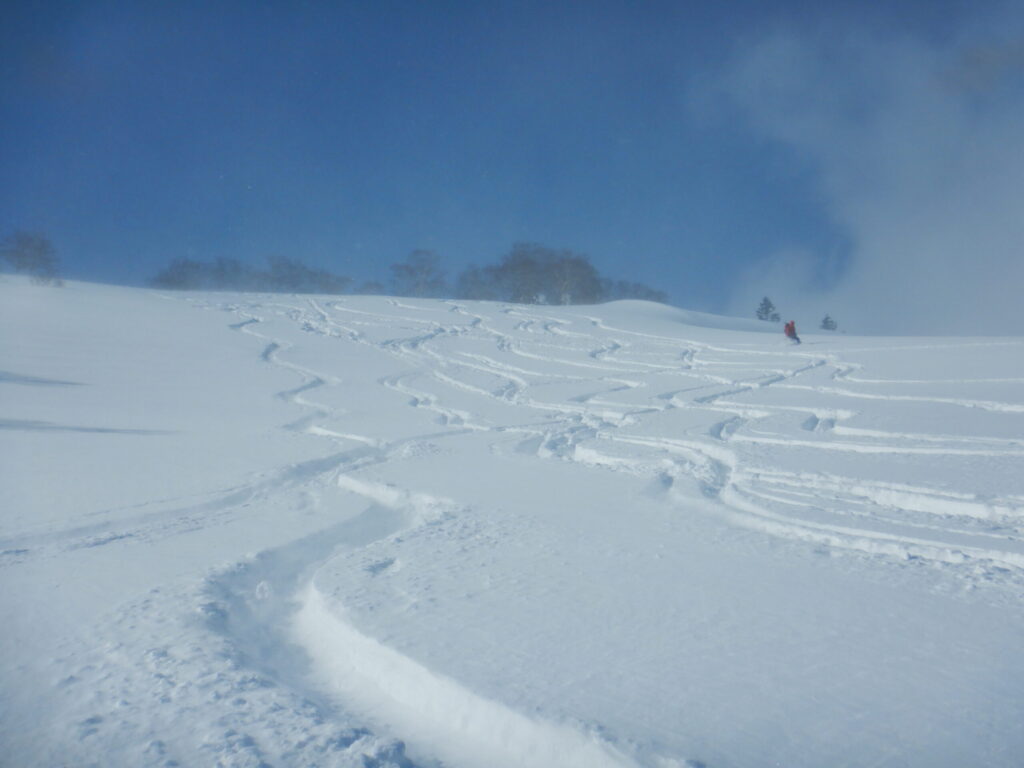
After descending, we returned to Kappa-no-Yado at Higashi-Hachimantai Onsen and soaked in the hot waters of Mori-no-Yu. As I felt the fatigue draining away, I harbored new hope for the next day’s forecast of clear weather.
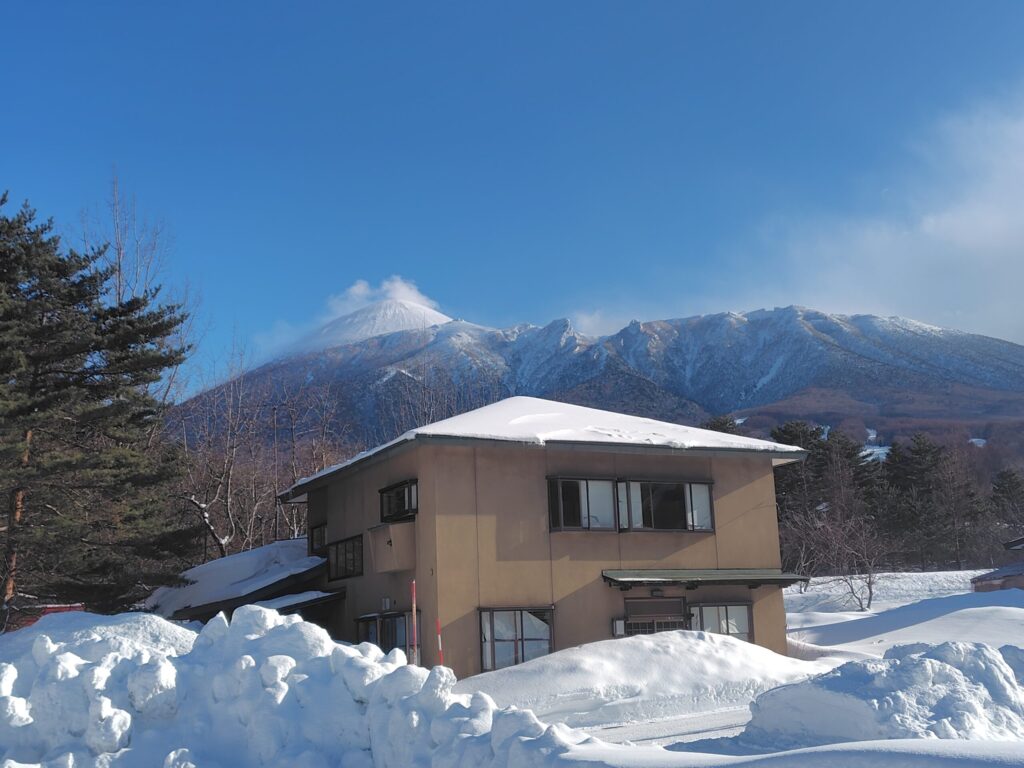
Part Two: Battle Along Mitsuishi-yama Ridge
Clear Morning, Overcast Trial
The following day, February 24th, we began walking again from the Gentaga-dake trailhead at 8:23 AM. Bodies refreshed in the comfortable lodge felt light. The flat forest road continuing from the trailhead was filled with refreshing cold air and occasional morning sunlight—literally “truly pleasant weather.”
However, mountains do not easily open their embrace. As we approached the ridgeline, the sky darkened, and we were immediately exposed to overcast conditions and strong winds. We hastily touched the peak and began our descent. In this harsh yet magnificent mountain region, we were reminded anew that preparedness for sudden weather changes is the lifeline.
What followed demanded the most technical judgment. The ridgeline toward Mitsuishi-yama presented alternating ascents and descents, requiring us to attempt skiing in walk mode with skins still attached. Skiing in this state proved extremely difficult.
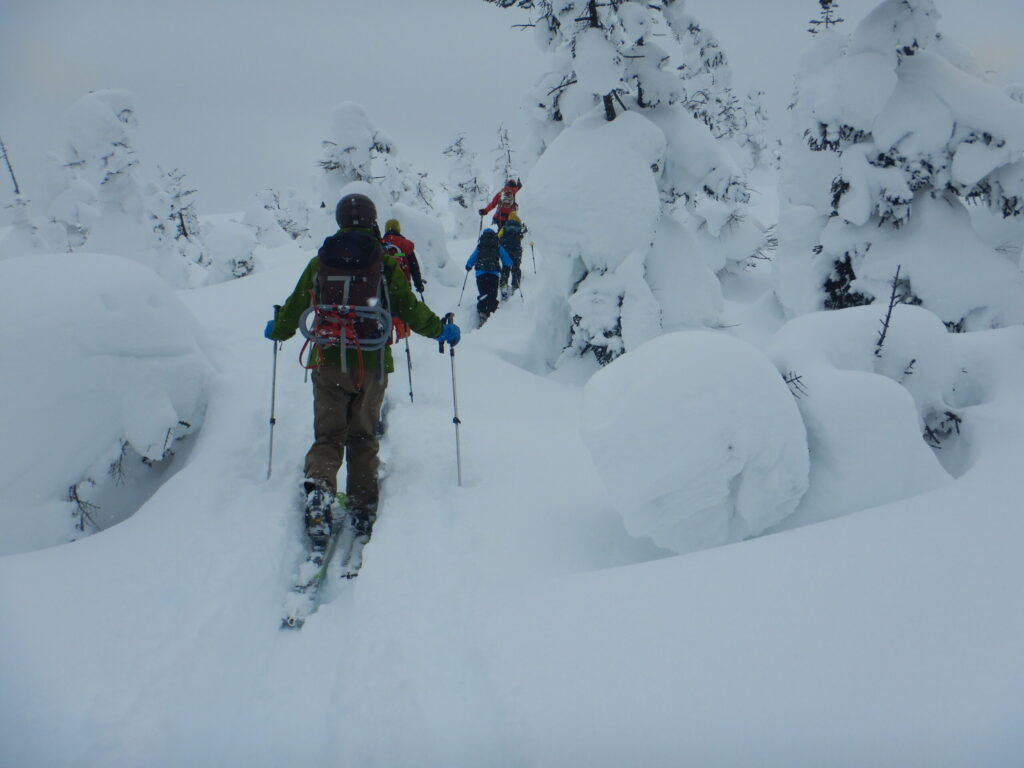
Being on telemark skis, I struggled less with skiing in this condition. Meanwhile, my other companions, unable to maintain balance against the subtle gradient and snow resistance, struggled considerably. Particularly in narrow forested sections, how many times did they lose balance and drown in snow? Though I avoided falling, the unstable skiing in walk mode demanded intense concentration and depleted my energy. Around me, as I skied utilizing telemark’s characteristic stability, my companions wrestling with the snow symbolized this expedition’s trials. Mutual assistance in difficult circumstances elevates the quality of mountain expeditions.
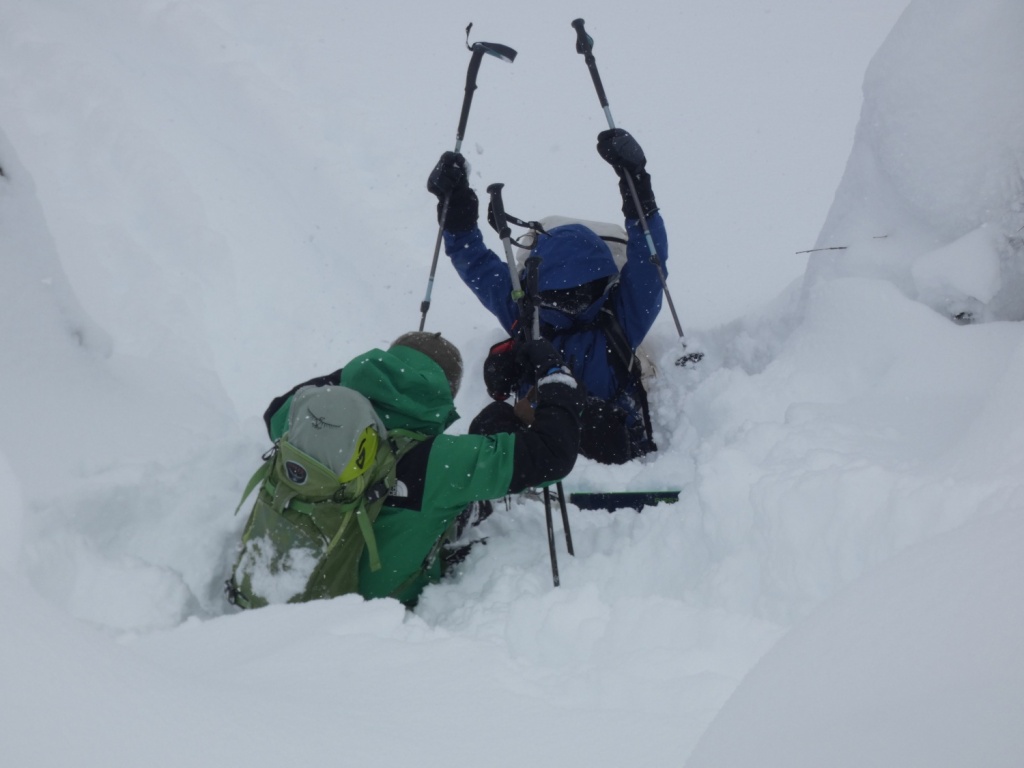
Part Three: The Beauty of Trampoline Descent
Trampoline’s Temptation
After battling fatigue and difficulty, our party finally reached the slopes for skiing’s true pleasure: the descent. The snow surface directly below the ridgeline had accumulated deep snow. Like yesterday, it was supreme deep powder.
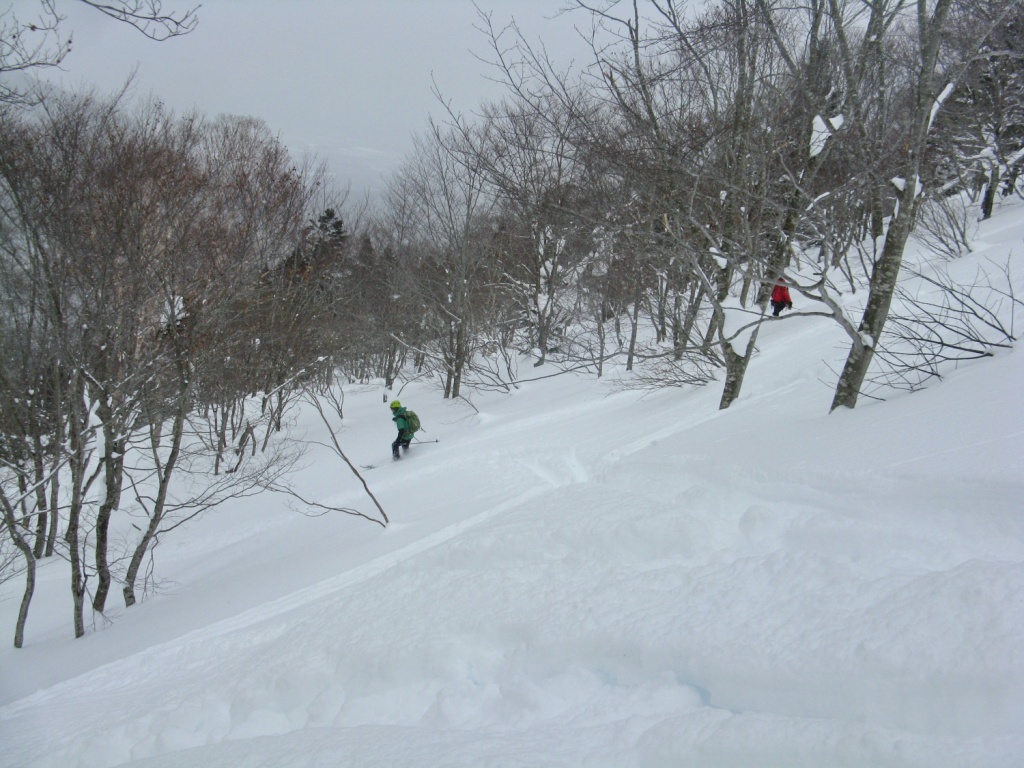
As the boards began sliding, I was enveloped in a sensation of floating lightly on the snow. The snow surface was like a quality trampoline cushion, my body bouncing with each turn. This floating sensation and liberating feeling of becoming one with the snow surely represent backcountry skiing’s irresistible appeal. In this blissful moment, I realized that the two days of trail-breaking and battling fierce winds existed entirely for the beauty of this single instant.
At 3:40 PM, we safely returned to the Gentaga-dake trailhead.
Before heading home, we stopped again at Hachimantai Onsenkan Mori-no-Yu. As everyone relaxed in the warm waters, released from the mountain’s severity, K slipped and fell on the frozen road right in front of the hot spring. He who had navigated two days in the snow mountains without a single misstep—laughter erupted at this momentary lapse in tension. This human touch became the perfect conclusion to our rigorous Ura-Iwate expedition.
The ridge’s severity characteristic of Ura-Iwate, and the supreme blessing of deep powder snow. Two days savoring one form of ski descent beauty in this harsh yet magnificent mountain region. I offered deep gratitude and reverence to these mountains.
LOG SUMMARY
- Date: February 23-24, 2025 (Sunday-Monday)
- Team: 11 members (myself, S, K, T, O, I, S, Y, S, I, M )
- Mountain Region: Ura-Iwate Mountain Range (Gentaga-dake, Mitsuishi-yama)
- Route: Day 1: Gentaga-dake trailhead round trip. Day 2: Gentaga-dake trailhead → Mitsuishi-numa → Mitsuishi-yama circuit
- Activity Time: Day 1: 5 hours 20 minutes (including breaks). Day 2: 7 hours 17 minutes (including breaks)
- Accommodation: Ski camp based at hot spring lodge (Higashi-Hachimantai Onsen, Kappa-no-Yado)
- Weather: Clear turning to overcast (strong winds)
- Special Notes: Heavy snowfall said to occur once in ten years. M participated on foot rather than skis for the entire journey.
